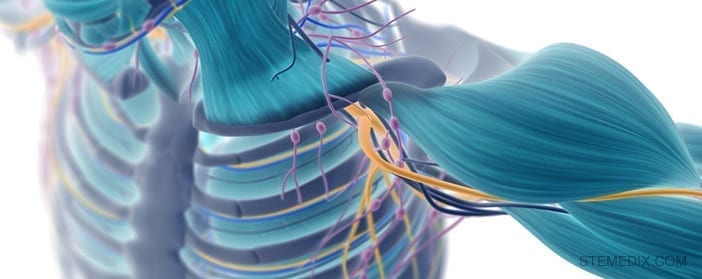Muscle atrophy refers to the wasting of muscles, which can occur due to lack of exercise or as a result of disease or even medication. Some forms of muscle atrophy can be treated with changes to the diet, exercise, or physical therapy, whereas others can be treated with clinical interventions like ultrasound therapy or surgery. However, researchers have now shown that stem cells may provide a way to prevent muscle atrophy in the first place.
While there may be visible signs of muscle atrophy, there are certain physiological events that allow doctors and scientists to determine with a greater degree of certainty whether muscle atrophy is occurring. For instance, when muscle atrophy occurs, certain proteins are expressed in lower amounts than they would normally be. The existence of these proteins gives researchers the opportunity to measure the levels of these proteins and thereby determine if and to what extent muscles are atrophying.
In the current study, researchers showed that in the presence of dexamethasone, a compound known to induce muscle atrophy, a mesenchymal stem cell-conditioned medium minimized the extent of atrophy. The researchers reached this conclusion because the expression of muscle atrophy-related protein was closer to normal when the mesenchymal stem cell medium was present than when it was not.
This preliminary evidence suggests that stem cells may be able to prevent muscle wasting and atrophy. Further studies that examine the impact of stem cells on muscle function will further our understanding of if and how stem cells will be able to be leveraged for the development of treatments or preventions for muscle atrophy.
Learn more about five benefits of stem cell therapy here.
Reference


 St. Petersburg, Florida
St. Petersburg, Florida
